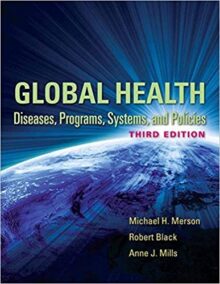The central mission of schools has traditionally been the intellectual development of children and adolescents. However, education cannot be separated from health. A growing body of evidence demonstrates that students’ physical, mental, and social well-being are intimately connected to their ability to learn, engage, and thrive. If schools ignore student health, they risk undermining academic performance, increasing absenteeism, exacerbating inequities, and compromising long-term life outcomes. Conversely, when schools actively promote health, they create conditions in which students are more likely to succeed academically, socially, and emotionally. This essay examines why schools should address student health, drawing from educational research, public health evidence, policy frameworks, and practical considerations. It will analyze the connections between health and learning, explore the specific areas of student health schools can influence, consider the equity implications, discuss long-term societal benefits, and highlight successful models of school-based health promotion.
Health status directly affects brain development, memory, attention, and problem-solving—all core elements of learning. For instance, poor nutrition can impair cognitive performance, while regular physical activity has been shown to improve concentration and executive functioning. Sleep quality, mental health, and chronic disease management are also crucial factors influencing academic outcomes.
Students who suffer from untreated health conditions—such as asthma, diabetes, anxiety, or depression—are more likely to miss school days. Chronic absenteeism reduces instructional time, lowers achievement, and increases the risk of dropping out. By addressing health, schools can reduce absenteeism and foster better engagement. Health challenges often manifest in behavioral issues. Hunger, fatigue, or unmanaged stress can contribute to irritability, poor self-regulation, and classroom disruptions. When schools integrate health supports, they improve overall classroom climate, making teaching more effective and learning more enjoyable.
Dimensions of Student Health Schools Should Address
- Physical Health
Schools play a vital role in ensuring that students meet their basic physical health needs:
– Nutrition: School meal programs can reduce food insecurity and provide balanced diets that enhance learning capacity.
– Physical Activity: Daily exercise improves not only physical fitness but also mood and cognitive readiness for learning.
– Preventive Health Services: Vision screenings, dental checkups, and vaccination programs in schools prevent conditions that hinder participation.
- Mental Health
The prevalence of anxiety, depression, and other mental health challenges among students has been rising. Left untreated, these issues reduce motivation, increase absenteeism, and heighten the risk of self-harm. Schools are uniquely positioned to provide early identification, counseling, and referral to specialized services.
- Social and Emotional Well-Being
Social-emotional learning (SEL) helps students build resilience, empathy, self-awareness, and decision-making skills. These attributes reduce bullying, foster positive peer relationships, and enhance long-term academic success.
- Safety and Environment
Safe, inclusive, and healthy school environments—free from bullying, violence, or environmental hazards like poor air quality—are essential for student well-being. Policies around discipline, digital safety, and inclusivity shape whether students feel secure and supported.
Why Schools Are the Right Place to Address Health
– Schools are one of the few institutions that reach nearly all children, regardless of socioeconomic status, race, or geography. This universal access makes them ideal settings for health interventions that would otherwise miss underserved populations.
– Children spend a significant portion of their waking hours in schools. The daily, structured nature of school life provides consistent opportunities to reinforce healthy behaviors.
– For families, schools are trusted community anchors. By integrating health initiatives, schools can connect families with resources, reinforce consistent health messages, and foster stronger family–school partnerships.
Equity Considerations
Health inequities are strongly tied to socioeconomic status, race, and geography. Low-income students are more likely to face food insecurity, limited access to healthcare, and unsafe neighborhoods for physical activity. Schools can play a corrective role by providing equitable access to meals, health services, and supportive environments.
Health disparities directly contribute to educational disparities. By targeting health barriers that disproportionately affect marginalized students, schools can help close the achievement gap and ensure all students have equal opportunities to succeed.
Healthy students are more likely to complete their education, secure stable employment, and contribute positively to the economy. Investments in school health yield long-term economic returns by reducing healthcare costs and increasing workforce productivity.
Students who feel cared for in schools are more likely to develop social responsibility and civic engagement. By addressing health, schools cultivate future citizens who are capable of contributing to a healthier society.
When schools intervene early to support health, they disrupt cycles where poor health leads to academic underachievement, limited employment opportunities, and intergenerational poverty.
Policy Frameworks Supporting School Health
– Whole School, Whole Community, Whole Child (WSCC) Model (source: https://www.cdc.gov/whole-school-community-child/about/index.html): This framework integrates health and education, emphasizing that academic success is inseparable from health and well-being. It calls for collaboration between families, communities, and schools to create supportive environments.
– National and Global Guidelines: Organizations such as the Centers for Disease Control and Prevention (CDC), the World Health Organization (WHO), and UNICEF have issued guidelines encouraging schools to adopt comprehensive health programs, highlighting the shared responsibility between education and health sectors.
Practical Strategies for Schools
1) Comprehensive School Health Programs (source: https://www.ed.gov/birth-to-grade-12-education/resources-families/student-health-resources) – Integrating physical, mental, and social-emotional health into the curriculum and school culture.
2) School-Based Health Centers – Providing medical, dental, and mental health services on campus, especially in underserved communities.
3) Nutrition Programs – Expanding access to free or reduced-price meals, ensuring menus meet nutritional standards.
4) Mental Health Supports – Hiring counselors, offering peer support programs, and destigmatizing help-seeking behaviors.
5) Physical Activity Integration – Ensuring daily recess, quality physical education, and after-school sports opportunities.
6) Family and Community Partnerships – Engaging parents, local health providers, and community organizations to extend support beyond school walls.
Addressing Challenges and Counterarguments
Critics argue that schools already face limited budgets and should focus solely on academics. However, the cost of not addressing health—lost instructional time, lower achievement, higher dropout rates—ultimately outweighs the investment needed. Partnerships with healthcare providers and community organizations can also help alleviate financial burdens. Some educators worry that schools risk overstepping by taking on responsibilities that belong to families or healthcare systems. Yet schools do not replace parents or doctors; rather, they complement them by creating supportive environments and ensuring students can access necessary services. There is a misconception that time spent on health detracts from academics. In reality, healthier students learn more efficiently, making instruction more effective and reducing time lost to absenteeism or behavioral disruptions.
Telehealth services, digital wellness platforms, and mental health apps are becoming increasingly viable tools for schools to support student well-being. Health interventions must respect cultural values and family practices, ensuring inclusivity and sensitivity. The COVID-19 pandemic underscored the importance of integrating health and education. From mental health crises to nutrition insecurity during school closures, the pandemic showed that schools cannot treat health as peripheral.
Question: What are Comprehensive School Health Programs?
Comprehensive School Health Programming (CSHP) represents a strategic approach to improving the overall health and well-being of students within the school environment. Rather than focusing solely on academic achievement or isolated health initiatives, CSHP integrates health into the broader educational context, recognizing that physical, emotional, social, and mental well-being are inextricably linked to learning outcomes. This holistic framework is vital in shaping students into healthy, resilient, and socially responsible individuals.
- Conceptual Foundation
The conceptual foundation of CSHP is grounded in the understanding that schools are not only centers for academic instruction but also primary environments where children and adolescents develop behaviors, attitudes, and habits that can persist into adulthood. Health-promoting behaviors established during childhood and adolescence can significantly influence long-term outcomes, including academic success, physical health, and mental well-being.
CSHP draws on ecological and systems-based theories of health promotion. It acknowledges that students are influenced not only by individual factors such as knowledge and attitudes but also by family, peer networks, school policies, and community environments. Therefore, interventions must be multi-layered and coordinated across these domains to be effective.
- Core Components of Comprehensive School Health Programming
CSHP is characterized by a multifaceted approach encompassing four primary pillars: curriculum, school environment, community partnerships, and family involvement. Each component interacts synergistically to create a supportive ecosystem for student health.
- Health Education and Curriculum Integration
At the heart of CSHP is health education, which extends beyond the traditional health class to be interwoven across the broader curriculum. Effective health education provides students with knowledge, skills, and attitudes necessary to make informed choices regarding nutrition, physical activity, substance use, sexual health, mental health, and safety. This education emphasizes experiential learning, critical thinking, and problem-solving, ensuring that students can apply knowledge in real-life situations.
Additionally, integrating health concepts across subjects—such as discussing mental wellness in literature or exploring nutrition in science lessons—reinforces learning and normalizes health discussions across disciplines.
- Healthy Physical and Social Environment
The school environment significantly impacts student health outcomes. CSHP promotes creating safe, supportive, and health-promoting school settings. This includes physical aspects, such as access to nutritious meals, safe playgrounds, and safe facilities that encourage physical activity, as well as social environments that foster inclusivity, respect, and emotional safety.
A positive social environment involves policies against bullying, promotion of equity and diversity, and the establishment of mental health support systems such as counseling services and peer mentoring programs. By fostering a holistic, health-centered environment, schools reduce barriers to learning and provide students with a sense of belonging and security.
- Family and Community Engagement
Families and communities are critical stakeholders in CSHP. Engaging families through education workshops, communication, and active participation ensures that health-promoting behaviors are reinforced at home. Community partnerships with health organizations, local businesses, and public health authorities provide schools with resources, expertise, and additional programming, enhancing the reach and sustainability of interventions.
Programs that leverage community engagement also expose students to diverse role models and opportunities for experiential learning, such as volunteering, internships, and mentorship in health-related initiatives.
- Health Services and Support
Comprehensive school health extends beyond prevention to include access to health services, screening, and early intervention. Onsite or nearby health services may encompass routine health checks, immunization programs, mental health counseling, sexual and reproductive health support, and referrals for specialized care. These services ensure that health challenges are addressed promptly, reducing their impact on academic performance and overall well-being.
- Implementation Strategies
Implementing CSHP effectively requires strategic planning, policy support, and continuous evaluation. Key strategies include:
– Needs Assessment: Understanding the health needs, challenges, and resources of the student population to tailor interventions effectively. Surveys, focus groups, and community consultations help identify priority areas.
– Policy Development: Establishing clear policies that support health-promoting behaviors, such as guidelines on nutrition, physical activity, mental health protocols, and anti-bullying regulations. Policy support ensures sustainability and institutional commitment.
– Staff Training and Capacity Building: Teachers, administrators, and support staff require ongoing professional development to integrate health education into their practice, recognize signs of physical or mental distress, and create supportive learning environments.
– Integration and Coordination: Health programs should not operate in isolation. Coordinated efforts across curriculum, school environment, health services, and community engagement amplify impact and reduce duplication of resources.
– Monitoring and Evaluation: Systematic assessment of health outcomes, program reach, and student engagement is essential. This ensures accountability, informs adjustments, and demonstrates the impact of CSHP on student health and learning.
- Evidence-Based Benefits
Research has consistently demonstrated that CSHP yields both health and educational benefits (source: https://pubmed.ncbi.nlm.nih.gov/19934026/). Students participating in comprehensive programs show improved physical activity levels, healthier dietary habits, better mental health, and reduced risk behaviors such as smoking or substance abuse. Academically, these students exhibit higher attendance rates, improved concentration, and better overall performance. Moreover, CSHP contributes to long-term societal benefits. By instilling health literacy, resilience, and positive lifestyle habits, schools play a critical role in preventing chronic diseases, promoting mental well-being, and reducing healthcare costs in the long term.
- Challenges and Considerations
Despite its potential, implementing CSHP faces challenges. These include limited funding, competing academic priorities, cultural sensitivities, and disparities in access to resources. Schools must navigate these challenges by leveraging community partnerships, advocating for policy support, and fostering a culture where health is valued as integral to learning rather than an optional add-on.
Also, the effectiveness of CSHP relies on inclusivity. Programs must address the diverse needs of students, including those with disabilities, marginalized communities, and varying socio-economic backgrounds. Tailoring interventions while maintaining equity ensures that no student is left behind.
- Future Directions
As global health challenges evolve, CSHP continues to adapt. Increasing focus is placed on mental health, digital wellness, climate and environmental health, and culturally responsive programming. Emerging technologies—such as digital health tools, online counseling platforms, and health-tracking apps—offer opportunities to enhance program delivery and engagement. Next, interdisciplinary collaboration is expanding the scope of CSHP. Schools are increasingly partnering with public health agencies, universities, and non-governmental organizations to conduct research, implement evidence-based interventions, and shape policies at regional or national levels.
- Conclusion
Comprehensive School Health Programming represents a paradigm shift in how education and health intersect. By fostering a coordinated, evidence-based approach, CSHP addresses the multifaceted needs of students, promoting physical, mental, emotional, and social well-being. Through curriculum integration, supportive environments, family and community engagement, and access to health services, CSHP creates resilient, healthy, and empowered learners. Its benefits extend beyond individual students to families, schools, and society at large, underscoring the critical importance of investing in comprehensive health strategies within educational systems. As schools embrace this holistic framework, they not only educate minds but also nurture healthier, more capable, and socially responsible citizens for the future.
Question: What are the Components of a Comprehensive School Health Program?
A Comprehensive School Health Program (CSHP) is a structured, integrated approach to promote the health and well-being of students, staff, and the wider school community. Schools play a critical role in shaping the physical, emotional, social, and mental health of children and adolescents, making them ideal platforms for health promotion. The concept of comprehensive school health emerged from the understanding that students’ health and learning are interdependent: healthy students are better learners, and well-functioning schools support health development.
CSHPs aim to create a safe, supportive, and health-promoting environment that engages students, staff, families, and community partners. These programs focus not only on preventing disease and promoting health behaviors but also on integrating health into the overall educational mission of schools.
According to the Centers for Disease Control and Prevention (CDC), the World Health Organization (WHO), and other public health authorities, a CSHP consists of multiple interrelated components, each contributing to the holistic development and well-being of students. Below, these components are discussed in detail.
Health education is the foundation of a CSHP. It equips students with knowledge, attitudes, and skills needed to make informed decisions about their health and adopt healthy behaviors. Health education goes beyond providing information; it fosters critical thinking, decision-making, and lifelong habits that support well-being.
Key elements of health education include:
– Curriculum-based instruction: This involves structured lessons integrated into the school curriculum, covering topics such as nutrition, physical activity, mental health, substance abuse prevention, sexual and reproductive health, personal hygiene, and injury prevention.
– Skill development: Students learn practical skills, including stress management, conflict resolution, goal setting, and communication skills that enable them to apply health knowledge in real-life contexts.
– Age-appropriate content: Health education must be tailored to students’ developmental levels, ensuring that content is understandable, relevant, and engaging.
– Interactive teaching methods: Participatory approaches such as discussions, role-playing, group projects, and simulations enhance student engagement and retention.
Health education not only benefits students directly but also has a ripple effect, influencing family and community health behaviors.
- Physical Education and Activity
Regular physical activity is essential for growth, development, and overall health. Physical education programs provide structured opportunities for exercise, teach movement skills, and promote lifelong fitness habits.
Key aspects include:
– Structured physical education classes: Curriculum-based classes teach motor skills, coordination, and fitness knowledge while emphasizing teamwork and personal achievement.
– Daily physical activity: Schools should provide opportunities for at least 60 minutes of moderate to vigorous physical activity daily, including recess, sports, and extracurricular programs.
– Inclusive practices: Activities should accommodate students of all abilities and encourage participation rather than competition alone.
– Promotion of active lifestyles: Programs should inspire students to engage in physical activity outside of school, integrating movement into daily routines.
Research demonstrates that regular physical activity improves not only physical health but also cognitive performance, attention span, and mental well-being, making this component essential for academic and holistic development.
- Health Services
Health services in schools address preventive care, early detection, and management of health problems, ensuring that students remain healthy and ready to learn. These services are often delivered by school nurses, counselors, and other health professionals.
Key components of school health services include:
– Screenings and assessments: Routine screenings for vision, hearing, dental health, and growth parameters help identify problems early.
– Immunizations: Schools may facilitate vaccination programs in coordination with public health authorities.
– First aid and emergency care: Schools must be equipped to respond to injuries, acute illnesses, or emergencies promptly.
– Chronic condition management: Support for students with asthma, diabetes, or other chronic conditions ensures that health needs do not interfere with learning.
– Referral systems: Coordination with local healthcare providers ensures access to specialized care when needed.
Comprehensive health services contribute to a supportive environment that fosters student attendance, engagement, and achievement.
- Nutrition Services
Good nutrition is fundamental to physical and cognitive development (source: https://pmc.ncbi.nlm.nih.gov/articles/PMC8839299/). Schools play a critical role in shaping healthy eating habits through nutrition education, meal programs, and policies that promote access to nutritious foods.
Key components include:
– School meal programs: Offering balanced, nutritious meals that meet dietary guidelines supports students’ growth, concentration, and overall health.
– Healthy snacks and beverages: Ensuring that vending machines and school stores provide healthy options reinforces positive dietary choices.
– Nutrition education: Teaching students about food groups, portion sizes, reading labels, and the impact of diet on health encourages informed decision-making.
– Food security initiatives: Programs that address hunger and malnutrition, such as breakfast programs and free or reduced-cost meals, ensure equity in health and learning.
– Promotion of healthy eating environments: Encouraging family involvement, school gardens, and interactive nutrition activities can reinforce healthy behaviors.
Proper nutrition enhances cognitive performance, emotional regulation, and resistance to illness, making this a cornerstone of CSHPs.
- Counseling, Psychological, and Social Services
Emotional and mental health is as important as physical health for student success (source: https://medicine.yale.edu/news-article/new-research-published-in-child-development-confirms-social-and-emotional-learning-significantly-improves-student-academic-performance-well-being-and-perceptions-of-school-safety/). Schools provide counseling and social services to support students’ psychological well-being, personal development, and social skills.
Key components include:
– Individual and group counseling: Licensed school counselors and psychologists provide support for academic, social, and personal issues, including stress, anxiety, and depression.
– Social skills development: Programs teach communication, conflict resolution, empathy, and teamwork skills.
– Crisis intervention: Schools are prepared to respond to trauma, bullying, or mental health crises.
– Referral to community services: Collaboration with mental health professionals and social services ensures access to specialized care.
– Preventive programs: Anti-bullying campaigns, stress reduction workshops, and peer support groups help prevent mental health issues.
Research indicates that effective counseling and social services improve students’ emotional resilience, academic performance, and overall life satisfaction.
- Healthy School Environment
The physical and social environment of a school profoundly influences health outcomes. A healthy school environment ensures that students and staff are safe, supported, and engaged.
Key elements include:
– Safe facilities: Buildings should be structurally sound, clean, and free from hazards. Fire safety, emergency exits, and accessibility are critical.
– Hygiene and sanitation: Safe water, clean restrooms, proper waste disposal, and pest control prevent the spread of infectious diseases.
– Psychosocial climate: Promoting respect, inclusivity, and a positive school culture supports emotional well-being.
– Policies promoting health: Smoke-free campuses, bullying prevention policies, and environmental sustainability initiatives contribute to a healthier environment.
– Physical environment for activity: Safe playgrounds, sports fields, and recreational spaces encourage physical activity.
A healthy school environment not only protects students from harm but also reinforces positive behaviors and learning outcomes.
- Family and Community Involvement
The engagement of families and communities strengthens the effectiveness of CSHPs (source: https://pmc.ncbi.nlm.nih.gov/articles/PMC7702099/). Schools cannot address health in isolation; partnerships with families and local organizations provide additional resources, support, and reinforcement of health messages.
Key strategies include:
– Parent education and engagement: Workshops, newsletters, and family activities help parents support healthy behaviors at home.
– Community partnerships: Collaboration with local health departments, hospitals, NGOs, and businesses expands access to services and programs.
– Volunteer and mentoring programs: Community members can contribute to health education, extracurricular activities, and mentorship.
– Cultural relevance: Engaging families ensures that programs are culturally appropriate and sensitive to community needs.
Strong family and community involvement increases program sustainability, relevance, and impact.
- Staff Wellness
Staff health and well-being directly influence the school environment and student outcomes. A CSHP emphasizes staff wellness as part of a holistic approach.
Key components include:
– Health promotion programs for staff: These may include physical activity initiatives, nutrition counseling, mental health support, and stress management workshops.
– Professional development: Training in health promotion, first aid, mental health awareness, and student well-being enhances staff capacity.
– Supportive work environment: Policies promoting work-life balance, recognition, and positive workplace culture contribute to staff satisfaction.
– Role modeling: Healthy staff serve as role models, reinforcing health messages for students.
Healthy, engaged staff are more effective educators and contribute to a positive school culture.
Integration and Coordination
A CSHP functions effectively when all components are integrated and coordinated. This requires:
– Leadership and governance: School leaders and health coordinators oversee program planning, implementation, and evaluation.
– Policy alignment: Health policies, curriculum, and daily practices are consistent and mutually reinforcing.
– Data-driven decision-making: Regular assessment of student health, program effectiveness, and school needs guides continuous improvement.
– Interdisciplinary collaboration: Teachers, nurses, counselors, and administrators work together to address the holistic needs of students.
– Sustainability planning: Programs are designed for long-term impact, with resource allocation and stakeholder engagement.
Coordination ensures that each component reinforces the others, creating a comprehensive, cohesive approach to student health.
Conclusion
A Comprehensive School Health Program is a multifaceted, integrated framework designed to promote the physical, mental, and social well-being of students and staff. Its eight core components—health education, physical education and activity, health services, nutrition services, counseling and social services, healthy school environment, family and community involvement, and staff wellness—work synergistically to create an environment conducive to learning and healthy development.
CSHPs recognize that health and education are deeply intertwined: healthier students attend school more regularly, engage more fully in learning, and develop lifelong skills and habits that benefit themselves and their communities. By adopting a comprehensive approach, schools become centers for health promotion, shaping a generation that is not only academically competent but also physically active, mentally resilient, and socially responsible.
The success of a CSHP depends on careful planning, collaboration, resource allocation, and continuous evaluation. When effectively implemented, these programs provide a sustainable model for improving student health, supporting academic achievement, and fostering a thriving school community.
Understanding the Concepts: Comprehensive School Health Programs (CSHP) vs. Comprehensive School Health Education (CSHE)
In the field of health promotion in schools, two terms are often used interchangeably, but they represent different scopes and functions: Comprehensive School Health Programs (CSHP) and Comprehensive School Health Education (CSHE). Both aim to improve the health, well-being, and academic success of students, yet they differ significantly in focus, scope, and implementation. Understanding these differences is crucial for educators, policymakers, and health professionals designing effective school-based interventions.
- Definitions
Comprehensive School Health Programs (CSHP)
CSHP is a broad, integrative approach to promoting health in school settings. It is a holistic framework that encompasses multiple components addressing students’ physical, emotional, social, and environmental well-being. CSHP is not limited to classroom instruction; it integrates policy, environment, community involvement, and services to create a supportive setting for healthy development.
The World Health Organization (WHO) and the Centers for Disease Control and Prevention (CDC) describe CSHP as a coordinated school health approach that involves the collaboration of school staff, families, students, and community partners to improve the health of students and, consequently, enhance academic achievement.
Comprehensive School Health Education (CSHE)
CSHE, on the other hand, refers specifically to the curricular component of a school health program. It focuses on the knowledge, skills, attitudes, and behaviors necessary for students to make informed decisions about their health. CSHE is instructional, meaning it occurs primarily in classrooms, although it can also be integrated into other learning environments.
CSHE aims to provide students with lifelong skills and competencies in areas such as nutrition, physical activity, sexual health, mental health, substance abuse prevention, and safety practices. It is often stand-alone or embedded within broader programs but is only one part of a CSHP.
- Scope and Focus
In essence, CSHP is a systemic approach to promoting health in schools, while CSHE is a subset of CSHP that specifically addresses learning and skill-building through education.
- Components of Comprehensive School Health Programs
A CSHP generally includes eight interrelated components, according to CDC and UNESCO models:
– Health Education (CSHE)
– Provides knowledge, skills, and attitudes for healthy behaviors.
– Example: Classroom lessons on balanced diets, exercise, mental health, substance abuse prevention.
– Physical Education and Physical Activity
– Encourages regular physical activity through structured PE classes and recess programs.
– Example: Daily PE, after-school sports programs, walking clubs.
– Nutrition Services
– Ensures students have access to healthy meals and nutrition education.
– Example: School breakfast/lunch programs, healthy vending policies, nutrition workshops.
– Health Services
– Provides access to health screenings, immunizations, and emergency care.
– Example: School nurse check-ups, mental health counseling, dental screenings.
– Counseling, Psychological, and Social Services
– Supports mental health, emotional well-being, and social skills.
– Example: Peer counseling, anti-bullying initiatives, mindfulness programs.
– Healthy School Environment
– Ensures the physical and emotional environment is safe and supportive.
– Example: Safe playgrounds, positive discipline policies, tobacco-free school zones.
– Staff Wellness
– Encourages teachers and staff to model healthy behaviors.
– Example: Employee wellness programs, stress management workshops.
– Family and Community Involvement
– Engages parents, caregivers, and community partners in supporting student health.
– Example: Parent workshops, community health fairs, partnerships with local clinics.
CSHP is integrative; its components interact and reinforce each other. Health education is central but cannot function optimally without supportive policies, services, and environments.
- Components of Comprehensive School Health Education
CSHE, while narrower in scope, is deeply structured and instructional. Its components include:
– Curriculum Development
– Age-appropriate, evidence-based lessons aligned with national or state health standards.
– Instructional Strategies
– Interactive teaching methods: discussions, role-playing, problem-solving, simulations.
– Example: Role-playing refusal skills to prevent substance abuse.
– Skill Development
– Focuses on practical skills such as decision-making, goal-setting, self-management, communication.
– Example: Teaching stress management techniques or first-aid skills.
– Assessment and Evaluation
– Measures student knowledge, attitudes, and behaviors to refine teaching strategies.
– Example: Pre- and post-tests on nutrition knowledge, surveys on physical activity habits.
– Integration Across Subjects
– Health education can intersect with science, physical education, or social studies.
– Example: Integrating lessons on environmental health into science classes.
Unlike CSHP, CSHE does not include policy creation, staff wellness programs, or physical infrastructure; its focus is student learning outcomes.
- Goals and Outcomes
CSHP Goals:
– Improve overall student health and safety.
– Promote mental, emotional, and social well-being.
– Support academic achievement through healthier students.
– Create a positive, supportive school environment.
CSHE Goals:
– Equip students with accurate health knowledge.
– Develop skills for informed decision-making and responsible behavior.
– Foster positive attitudes toward health and wellness.
– Encourage lifelong healthy behaviors.
Outcomes:
– CSHP outcomes are broad, including reductions in absenteeism, improved nutrition, increased physical activity, and enhanced school climate.
– CSHE outcomes are specific to student learning, such as improved knowledge of nutrition, better understanding of disease prevention, or mastery of first-aid skills.
- Implementation Strategies
CSHP Implementation:
– Requires collaboration across multiple stakeholders: teachers, nurses, counselors, parents, community partners, and local health authorities.
– Policies and environmental changes are critical.
– Programs may include school gardens, mental health services, nutrition policies, safe transportation initiatives, or anti-bullying campaigns.
CSHE Implementation:
– Primarily delivered by classroom teachers using structured lesson plans.
May be supplemented with guest speakers, multimedia resources, or experiential learning activities.
– Assessment focuses on student performance, participation, and skill acquisition.
- Examples to Illustrate the Difference
Example 1: Nutrition
CSHP approach:
– Healthy cafeteria meals
– Vending machine regulations
– Nutrition education for students and families
– Community partnerships with local farms
CSHE approach:
– Classroom lessons on balanced diet and reading nutrition labels
– Interactive activities like planning a healthy meal
Example 2: Physical Activity
CSHP approach:
– PE classes, recess, sports teams, safe walking paths to school
– Staff wellness programs promoting active lifestyles
– After-school physical activity clubs
CSHE approach:
– Lessons on benefits of exercise
– Teaching goal-setting for daily physical activity
Example 3: Mental Health
CSHP approach:
– School counseling services
– Peer support groups
– Anti-bullying policies
– Staff training on mental health awareness
CSHE approach:
– Classroom sessions on stress management techniques
– Teaching coping skills, mindfulness exercises, or conflict resolution
These examples clearly demonstrate that CSHE is about teaching, while CSHP is about creating a supportive ecosystem for health.
- Interdependence Between CSHP and CSHE
It is important to note that while CSHE is a subset of CSHP, the two are interdependent:
– CSHE provides the knowledge and skills students need, but without supportive programs and environments (CSHP), students may struggle to implement healthy behaviors.
– CSHP creates the conditions for health education to be effective, ensuring that policies, services, and community engagement reinforce what students learn in the classroom.
In other words, CSHE is necessary but not sufficient for improving student health; CSHP is comprehensive and holistic, encompassing education alongside environmental, policy, and service-based strategies.
- Evidence of Effectiveness
Research has shown that comprehensive school health programs improve both health and academic outcomes (source: https://www.cdc.gov/healthy-schools/health-academics/index.html):
– Schools implementing CSHP with multi-component interventions report increased physical activity, healthier eating, reduced substance use, and improved mental health.
– CSHE alone improves health knowledge and self-reported behaviors, but the effect on long-term behavior change is stronger when embedded within a CSHP.
For example:
– A meta-analysis by the CDC found that schools with multi-component health programs reduced obesity rates more effectively than schools with only classroom health education (source: https://www.cdc.gov/school-health-conditions/chronic/obesity.html).
– Programs integrating nutrition education (CSHE) with school meal improvements (CSHP) yielded the greatest improvements in student dietary habits.
- Key Takeaways
– Scope: CSHP is school-wide and multi-component; CSHE is classroom-based and instructional.
– Purpose: CSHP aims to improve overall student health and create supportive environments; CSHE focuses on developing knowledge, skills, and attitudes.
– Components: CSHP includes health education, services, environment, staff wellness, and family/community involvement; CSHE is specifically about health education curriculum.
– Implementation: CSHP requires collaboration and policy/environmental changes; CSHE is primarily delivered through classroom instruction.
– Interdependence: CSHE is necessary for CSHP, but CSHP amplifies the effectiveness of CSHE through supportive environments and services.
In summary, comprehensive school health education is the instructional heart of the broader comprehensive school health program, which provides the systemic support needed to translate learning into lifelong healthy behaviors.
Question: How is Comprehensive School Health Program Implemented?
The Comprehensive School Health Program (CSHP) is implemented as a multifaceted approach to promote the physical, mental, emotional, and social well-being of students. Its implementation involves coordinated strategies across different levels of the school community, including students, teachers, parents, and the broader community. Here’s a detailed breakdown:
- Needs Assessment
– Purpose: Identify the health needs and priorities of students.
– Methods: Surveys, interviews, health screenings, observation, and reviewing local health data.
– Outcome: Determines which health issues (nutrition, mental health, physical activity, substance abuse, etc.) should be addressed.
- Program Planning
Setting Goals and Objectives: Define what the program aims to achieve (e.g., improve physical activity, reduce bullying, promote healthy eating).
Curriculum Integration: Health education is incorporated into the regular school curriculum.
Resource Allocation: Identify funding, staff, and materials needed for program activities.
Policy Development: Establish school policies supporting health (e.g., nutrition policies, tobacco-free environment).
- Implementation Strategies
CSHP is typically implemented through six key components:
– Health Education:
– Age-appropriate lessons on nutrition, hygiene, mental health, sexual health, substance abuse prevention, etc.
– Promotes knowledge, skills, and attitudes for healthy living.
– Physical Education & Activity:
– Daily physical activity programs and extracurricular sports.
– Encourages lifelong fitness habits.
– Health Services:
Regular health screenings (vision, dental, immunizations).
Access to school nurses, counselors, or health professionals.
– Nutrition Services:
Provision of healthy meals and snacks.
Education on healthy eating habits.
– Counseling & Psychological Services:
Support for mental health, stress management, conflict resolution, and emotional well-being.
Anti-bullying programs and peer support groups.
– Healthy School Environment & Policies:
Ensuring safe, clean, and supportive physical and social environment.
Policies on substance abuse, safety, and inclusivity.
- Family & Community Involvement
Parents and caregivers participate in health promotion through workshops, newsletters, and school events.
Partnerships with local healthcare providers, NGOs, and government programs strengthen resources and outreach.
- Monitoring & Evaluation
Track progress through regular assessments (attendance, academic performance, health indicators, behavior changes).
Feedback informs program adjustments for continuous improvement.
- Sustainability
Train staff to maintain the program long-term.
Embed health promotion into school culture rather than treating it as a one-time activity.
In essence: CSHP is implemented as a coordinated, school-wide initiative combining education, services, policies, and community engagement, with ongoing evaluation to ensure that students develop healthy lifestyles that last a lifetime.
Conclusion
Schools should address student health because learning and health are inseparable. By supporting physical well-being, mental health, and social-emotional development, schools not only improve academic performance but also promote equity, reduce long-term societal costs, and foster thriving communities. With frameworks such as the WSCC model, practical strategies like school-based health centers, and evidence from global case studies, the case is clear: investing in student health is investing in education itself. As future citizens, workers, and leaders, today’s students need more than academic skills—they need the foundation of health to fully realize their potential. Schools, as universal and trusted institutions, are uniquely positioned to provide this foundation. Ignoring student health is no longer an option; integrating it into the educational mission is essential for individual success and collective prosperity.
Schools cannot meet all student health needs in isolation. Effective health programs require strong partnerships with community resources such as public health agencies, local hospitals, voluntary organizations, social services, mental health providers, and youth-serving organizations. By integrating these resources, schools expand their capacity to address physical, mental, and social health concerns that extend beyond classroom instruction. This collaboration ensures continuity of care, reduces duplication of services, and makes programs more comprehensive and accessible to students and families. Community involvement also fosters shared responsibility, bringing in expertise, funding, and advocacy that strengthen school health initiatives. Such integration creates a supportive network where schools act as central hubs, connecting children and families with the broader health and social systems needed for overall well-being and academic success.
Megan Wilson is a teacher, life strategist, successful entrepreneur, inspirational keynote speaker and founder of https://EbookACE.com. Megan champions a radical rethink of our school systems; she calls on educators to teach both intuition and logic to cultivate creativity and create bold thinkers.




































